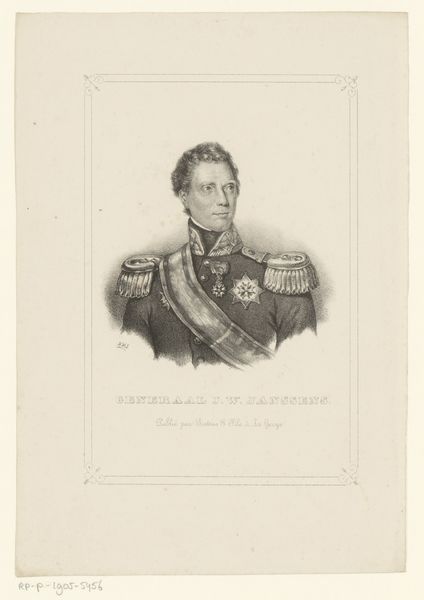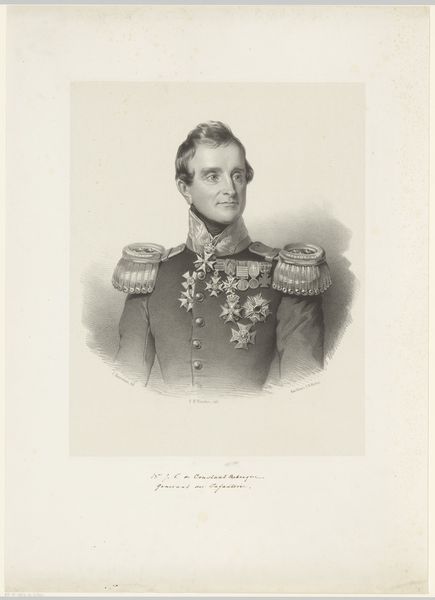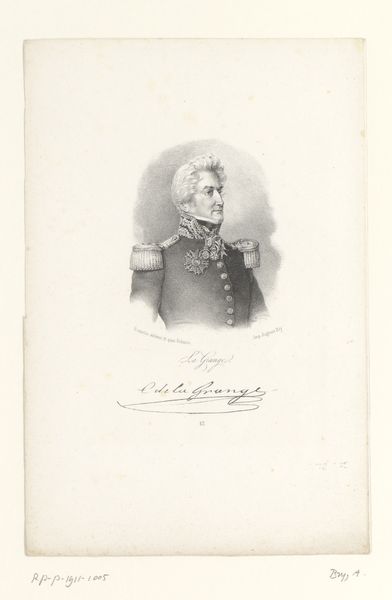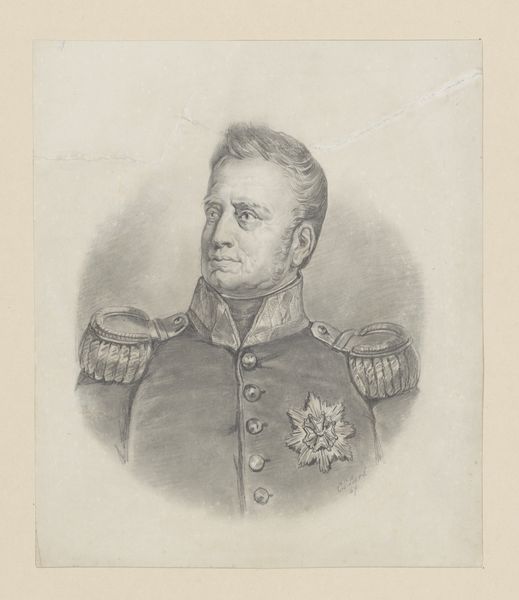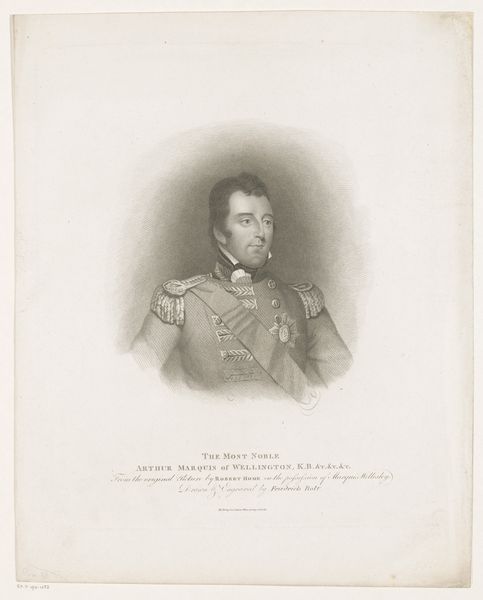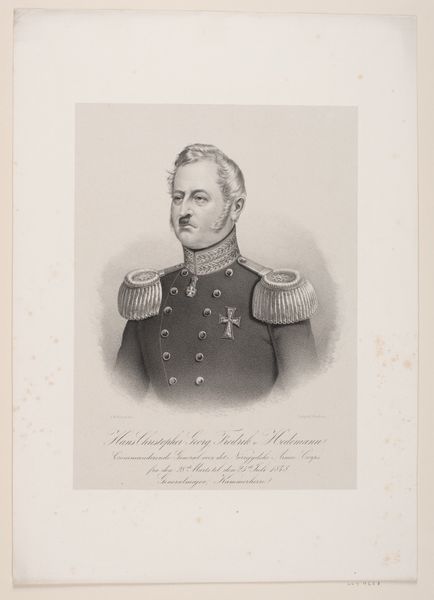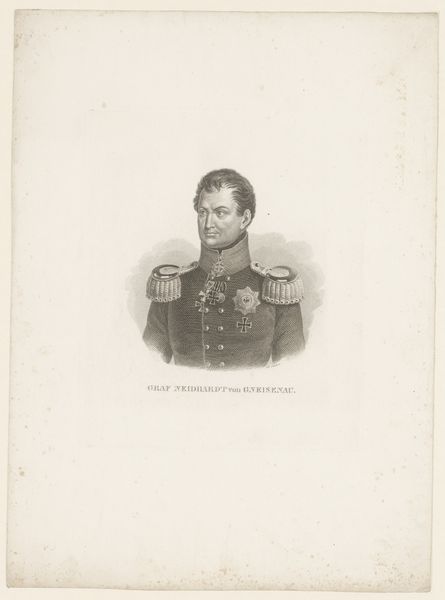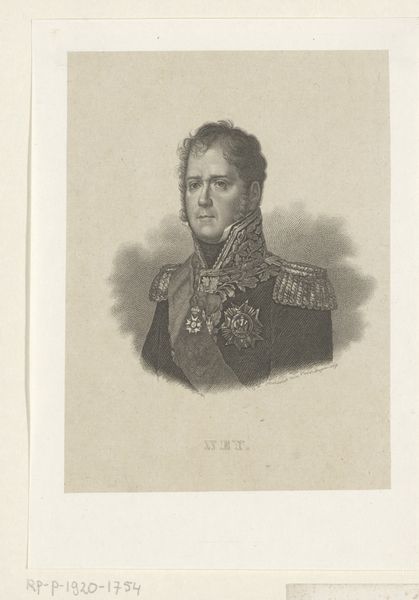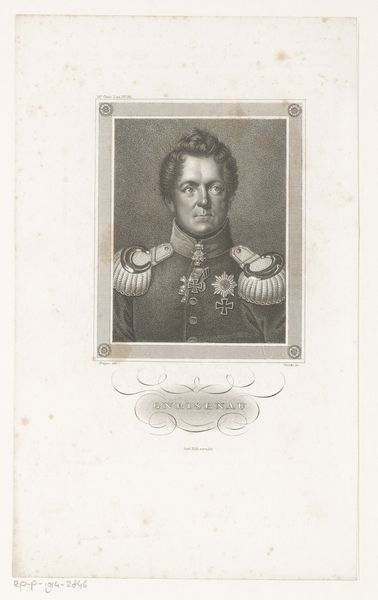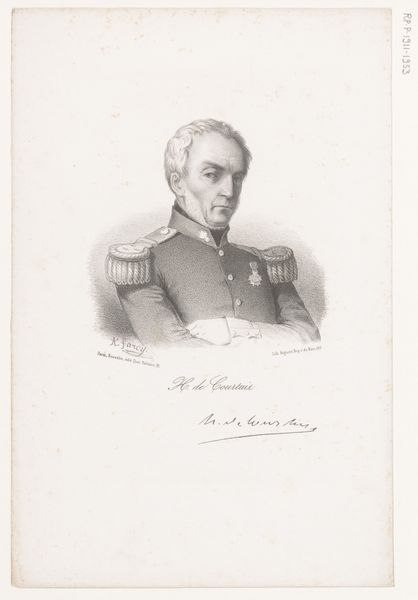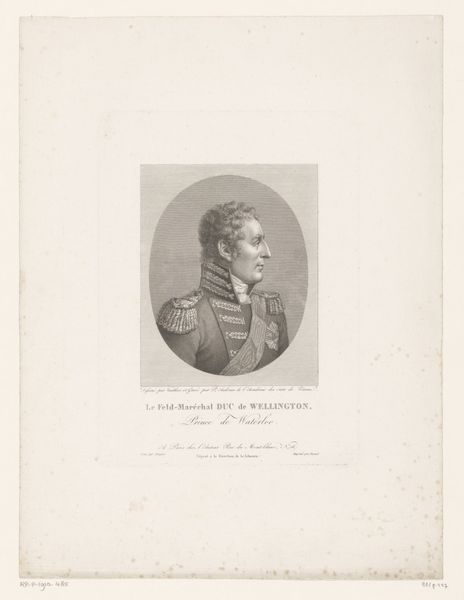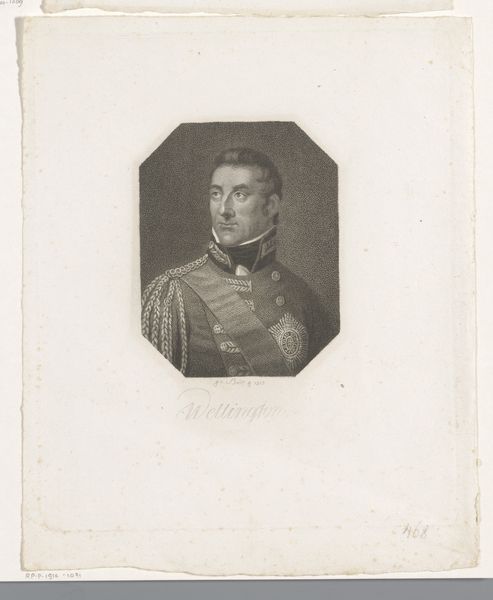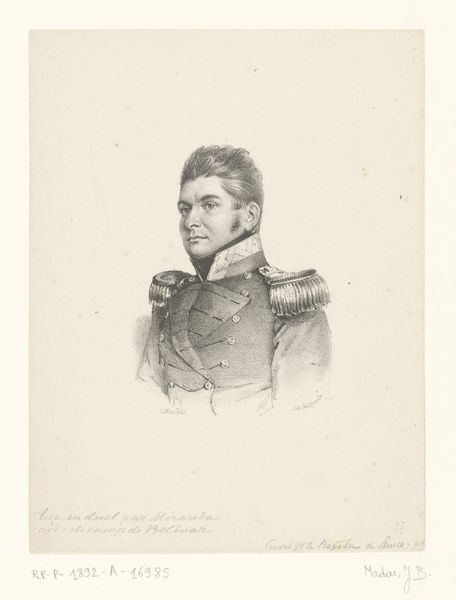
print, engraving
#
portrait
#
pencil drawn
#
neoclacissism
# print
#
old engraving style
#
pencil drawing
#
history-painting
#
academic-art
#
engraving
Dimensions: height 260 mm, width 171 mm
Copyright: Rijks Museum: Open Domain
Curator: This is "Portret van generaal Andrew Jackson," an engraving from circa 1840-1850, attributed to Charles Billoin, currently residing at the Rijksmuseum. Editor: It's incredibly stark. The tightly framed composition, the monochrome palette, it all projects a sense of rigid authority, wouldn't you say? Curator: Indeed. The engraving technique, with its reliance on precisely etched lines, enhances this austerity. Note how the lines modulate to define the general's face, creating depth and volume. There's an undeniable air of Neoclassical restraint in its geometry. Editor: Which speaks volumes about the context of production. Think of the engraver, replicating an image, beholden to the demands of mass dissemination, caught between artistry and industry, their labour… Curator: But the artist is still present. The tonal range achieved within the limited means of engraving—that is art, skillful deployment of line. Look at the detail in the military uniform! The meticulous attention mirrors Jackson's own disciplined persona. Editor: And consider the social function of such portraits. Meant to legitimize power. Every button, every meticulously rendered braid speaks of wealth and a hierarchical structure, created by many hands. How many workers, how much paper went into reproducing this image? Curator: That touches upon interesting facets of dissemination and reception, yet I would focus on the art. Consider the interplay between light and shadow, how they define the planes of his face, conveying a sense of resolution and character... Editor: Perhaps, but for whom? How were such images consumed, by whom, and to what end? Understanding the historical trajectory of such materials, and labor processes—that is, in my estimation, vital to fully grasp an image's impact. Curator: Undoubtedly valid considerations. However, to distill the piece solely to those elements risks neglecting its aesthetic achievements. Let’s agree it’s a testament both to a specific moment in material culture and engraving skill, forever capturing Jackson's likeness. Editor: Fair enough. A meeting of artistry, labour, and intent, indelibly marked on paper, then and now.
Comments
No comments
Be the first to comment and join the conversation on the ultimate creative platform.
